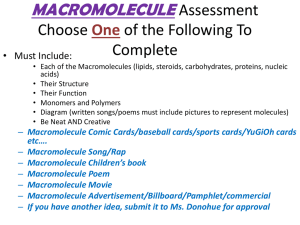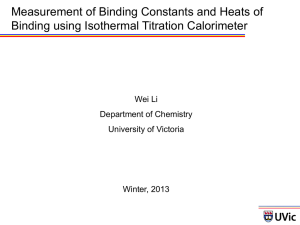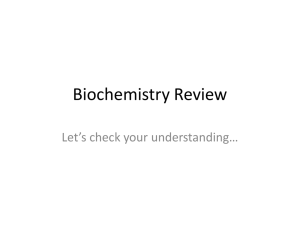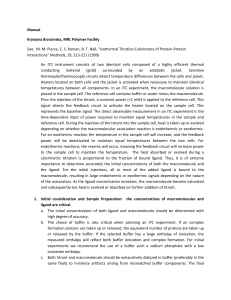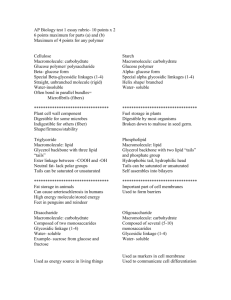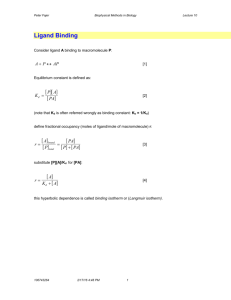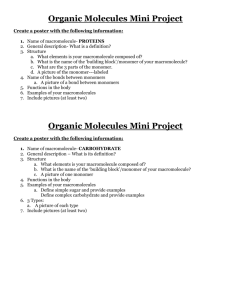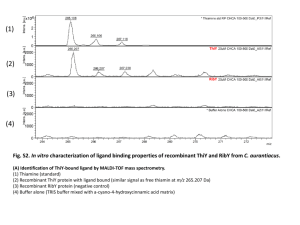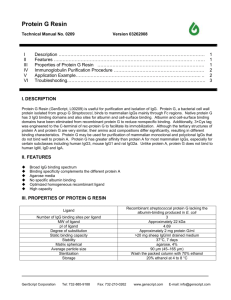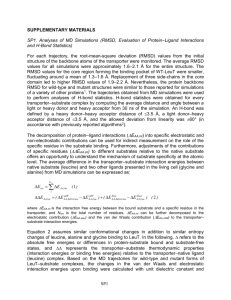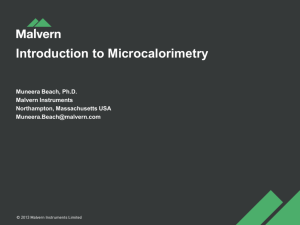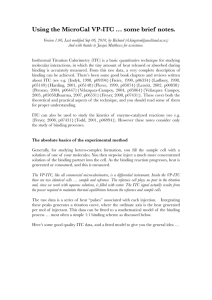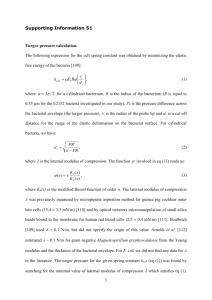Sample Preparation Guidelines (ITC)
advertisement
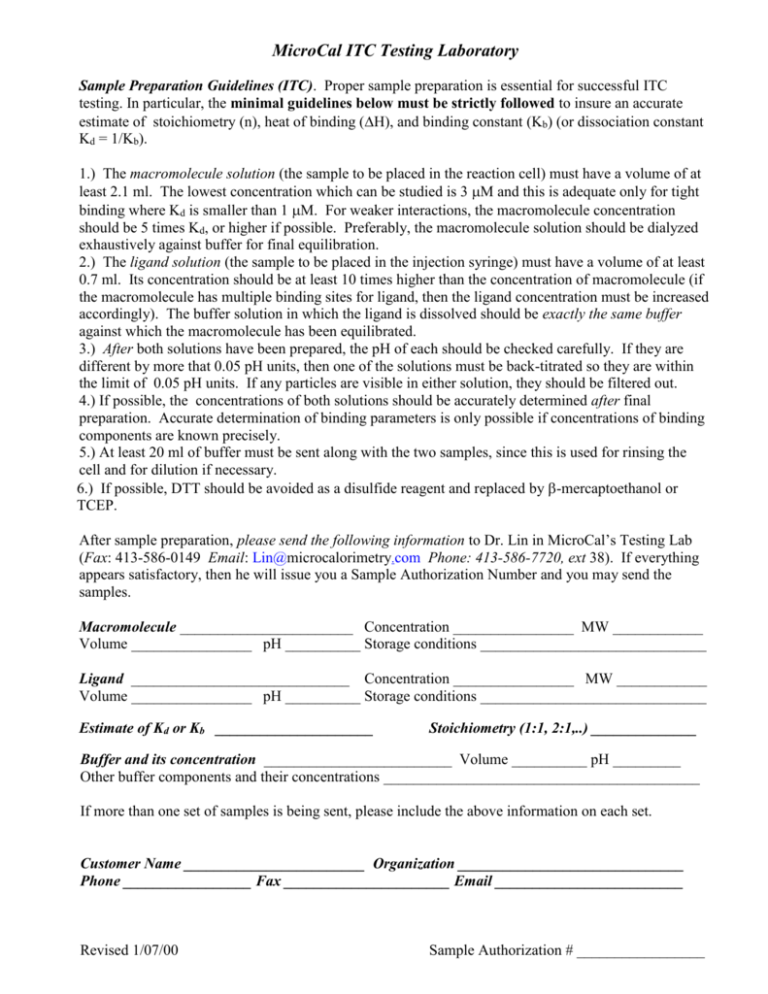
MicroCal ITC Testing Laboratory Sample Preparation Guidelines (ITC). Proper sample preparation is essential for successful ITC testing. In particular, the minimal guidelines below must be strictly followed to insure an accurate estimate of stoichiometry (n), heat of binding (H), and binding constant (Kb) (or dissociation constant Kd = 1/Kb). 1.) The macromolecule solution (the sample to be placed in the reaction cell) must have a volume of at least 2.1 ml. The lowest concentration which can be studied is 3 M and this is adequate only for tight binding where Kd is smaller than 1 M. For weaker interactions, the macromolecule concentration should be 5 times Kd, or higher if possible. Preferably, the macromolecule solution should be dialyzed exhaustively against buffer for final equilibration. 2.) The ligand solution (the sample to be placed in the injection syringe) must have a volume of at least 0.7 ml. Its concentration should be at least 10 times higher than the concentration of macromolecule (if the macromolecule has multiple binding sites for ligand, then the ligand concentration must be increased accordingly). The buffer solution in which the ligand is dissolved should be exactly the same buffer against which the macromolecule has been equilibrated. 3.) After both solutions have been prepared, the pH of each should be checked carefully. If they are different by more that 0.05 pH units, then one of the solutions must be back-titrated so they are within the limit of 0.05 pH units. If any particles are visible in either solution, they should be filtered out. 4.) If possible, the concentrations of both solutions should be accurately determined after final preparation. Accurate determination of binding parameters is only possible if concentrations of binding components are known precisely. 5.) At least 20 ml of buffer must be sent along with the two samples, since this is used for rinsing the cell and for dilution if necessary. 6.) If possible, DTT should be avoided as a disulfide reagent and replaced by -mercaptoethanol or TCEP. After sample preparation, please send the following information to Dr. Lin in MicroCal’s Testing Lab (Fax: 413-586-0149 Email: Lin@microcalorimetry.com Phone: 413-586-7720, ext 38). If everything appears satisfactory, then he will issue you a Sample Authorization Number and you may send the samples. Macromolecule _______________________ Concentration ________________ MW ____________ Volume ________________ pH __________ Storage conditions ______________________________ Ligand _____________________________ Concentration ________________ MW ____________ Volume ________________ pH __________ Storage conditions ______________________________ Estimate of Kd or Kb _____________________ Stoichiometry (1:1, 2:1,..) ______________ Buffer and its concentration _________________________ Volume __________ pH _________ Other buffer components and their concentrations __________________________________________ If more than one set of samples is being sent, please include the above information on each set. Customer Name ________________________ Organization ______________________________ Phone _________________ Fax ______________________ Email _________________________ Revised 1/07/00 Sample Authorization # _________________
